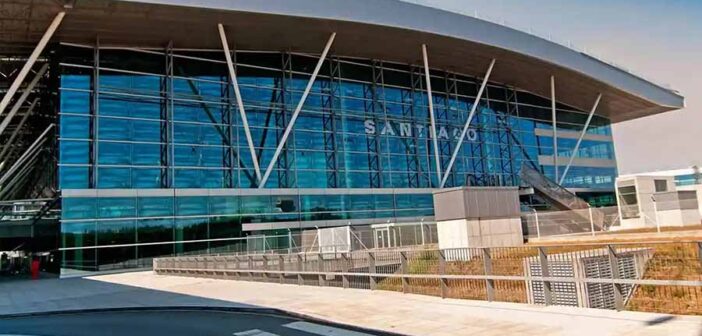Santiago de Compostela Airport, officially named Santiago-Rosalيa de Castro Airport, serves as a key gateway to Spain’s Galicia region, handling around 3.6 million passengers annually. Located 10 kilometres northeast of Santiago’s city centre, this modern airport connects travellers to 29 destinations across seven countries, with airlines like Ryanair, Vueling, Iberia, and easyJet operating regular flights. Its proximity to the Camino de Santiago pilgrimage route makes it a popular choice for visitors exploring the region’s cultural heritage.
Accessing the airport is straightforward, with several transport options ensuring a smooth journey to and from the city. Line 6A buses, operated by Empresa Freire, run every 30 minutes from 07:00 to 01:00, connecting the airport to Santiago’s Hَrreo 23 Intermodal Station in about 30 minutes for €3.20, with stops at the central bus and train stations.
Taxis offer a faster 15-minute ride to the city centre for a fixed €23 fare, while ride-hailing apps like Uber and Cabify provide door-to-door convenience. Drivers benefit from the airport’s location near the A-54 motorway, with over 5,000 short- and long-term parking spaces, starting at €1.50 per hour. Car rental agencies, including Avis, Hertz, and Enterprise, are located in the arrivals area. Travellers should note that bus services may be slower during early afternoon or evening traffic, so planning for extra time is advisable.
The airport’s single terminal, opened in 2011, spans 74,000 square metres and features 22 check-in desks, three security checkpoints, four baggage carousels, and 13 gates, five with airbridges. Divided into Schengen and non-Schengen zones, the terminal’s clear layout ensures easy navigation, with short walking distances and digital screens guiding passengers.
Security checks typically take 10-15 minutes, though arriving two hours early for domestic flights and three hours for international ones is recommended, especially during peak summer months. The terminal’s open-air terrace on the first floor offers a pleasant spot to relax before boarding.
Delays are generally minimal, thanks to the airport’s medium size and efficient operations, but peak summer periods from July to August can lead to congestion at check-in or security. Coastal fog or rain, common in Galicia, may occasionally disrupt flights, and air traffic control issues in European airspace can cause minor delays. On-time performance is reliable, particularly for Vueling and Ryanair’s frequent routes to Madrid and Barcelona, but checking flight status via airline apps or the airport’s website is advised. Past incidents, such as aircraft veering off runways in poor weather, underscore the importance of monitoring conditions.
Dining options cater to a range of tastes, with Eating Point on the departures level serving Galician dishes, pasta, pizza, and burgers from 05:30 to 23:00. La Pausa, also in departures, offers regional cuisine, grilled meats, and hot starters during the same hours. In the arrivals area, Il Caffe di Roma provides Italian coffee and snacks from 07:00 to midnight. Retail includes a duty-free shop airside with perfumes, alcohol, and local products, alongside a convenience store for travel essentials. While not extensive, these options meet the needs of most travellers.
Facilities enhance the passenger experience, with free unlimited Wi-Fi available throughout the terminal. ATMs, currency exchange, and a tourist information desk are located in the main hall, and baggage storage is available for short-term needs. Accessibility is well-supported, with ramps, lifts, and toilets for passengers with reduced mobility, and assistance can be arranged 48 hours in advance through airlines. The Santiago VIP Lounge, near gates A4-A5, offers snacks, drinks, and a quiet space for €34.90, open from 06:00 to 23:00 in summer and until 22:00 in winter. No dedicated rest zones exist, but comfortable seating without armrests is available outside check-in and on the third floor. The airport operates from 05:30 to 23:00, though it may stay open for late flights, and nearby hotels like Hotel Capital de Galicia, 5.7 miles away, cater to layovers.
Connections are efficient, with minimum connection times of 40 minutes for domestic and international flights. The terminal’s compact size and clear signage make transfers quick, though non-Schengen connections may require passport control, so allowing 90 minutes is prudent. Most flights are point-to-point, with Madrid and Barcelona serving as primary hubs for onward travel.




